Common and Proper Nouns - 4 Steps to Success
Once students can confidently answer the question, “What are nouns?”, they’re ready to move on to learning about common and proper nouns.
Like any good lesson, scaffolding instruction is the key to student success. Solid core instruction means fewer students who need reteaching and/or remediation. Strategic teaching is a win for both the students and the teacher!
Listed below are 4 simple steps for effectively presenting common and proper nouns to ensure student mastery.
Step 1- Define the Terms
What are common and proper nouns?
The first step in teaching these parts of speech is to make sure you define the terms for your students. In general, students need to know:
A common noun refers to any person, place or thing.
A proper noun is the name of a specific person place or thing and is always capitalized.
- Note: When teaching concrete nouns to my students, I make a point to not use the term “name” in the definition as this has, inevitably, confused students. I only use “name” in a definition when discussing proper nouns. You can read about that here.
Now, you could easily just provide the definitions and move on, but if you want to get your students excited and engaged from the start, consider including a quick video to introduce the lesson.
My students always loved the video below. It’s short but packed with good information and examples. (More on using examples later – keep reading!)
Proper Nouns | Award Winning Proper Nouns Teaching Video | What is a Proper Noun
Use Anchor Charts to Display Definitions
Using anchor charts is a smart way to keep the definitions front and center of your students’ minds during your activities and lessons. The charts should be displayed where students can easily reference them while they’re working independently.
Again, you can create charts with your students in class or use pre-printed posters like the ones below. (These posters are part of my resource on TpT.
Step 2- Provide Examples of Common and Proper Nouns
Whether you’re creating an anchor chart in class or using a printed one one, giving students a reference list is also a highly effective tool for reinforcing the difference between common and proper nouns.
Lists should provide concrete examples the students can relate to.
Again, you can create lists together in class or get them started with a pre-printed handout.
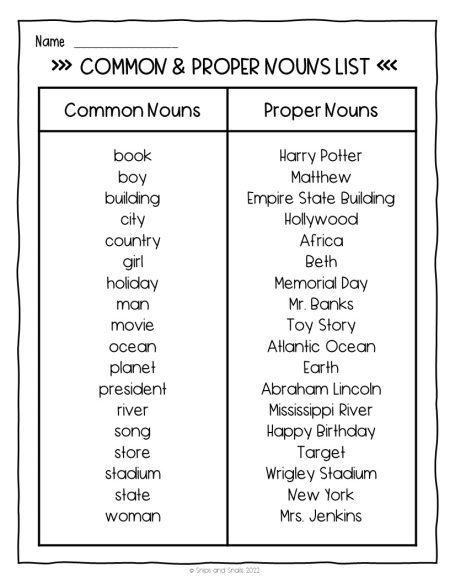
Add Real-World Practice with a Scavenger Hunt
A fun activity to expand students’ learning and promote thinking is to have students find examples of common and proper nouns in the real world.
Bring in sales papers and ads that student can cut up to create mini charts in class. (This is a great opportunity to allow students to work with partners, especially those students who may need more support.)
- If you can’t gather enough sales papers, using image searches on the computer is also an option.
Step 3- Practice Identifying Common and Proper Nouns
The next step in this learning journey is to to provide students with the opportunity to practice identifying these nouns.
Beginning with words in isolation then moving to sentences will scaffold the learning for the students and allow you to intervene in a timely manner, if needed.
Word Sorts - Words in Isolation
Word sorting activities can be an effective first step in learning to differentiate between common and proper nouns, and it’s an activity that students enjoy.
You can simply write words on cards for students to sort or purchase pre-made cut-and-paste activities.
Identifying Nouns in Sentences
Using sentence activities provides a little more challenge for the students and allows them to see common and proper nouns in writing.
Sentences also model for students how proper nouns are always capitalized regardless of where the words are found in text. Students can never have enough reminders about capitalization rules!
There are two levels of rigor with the sentences:
- Easier: The nouns in the sentences are underlined, and the students determine whether the nouns are common or proper.
- Harder: The students must find all nouns in the sentences and determine if the nouns are common or proper.
- This level can be differentiated by alerting students to how many nouns each sentence contains. (See the examples below.)
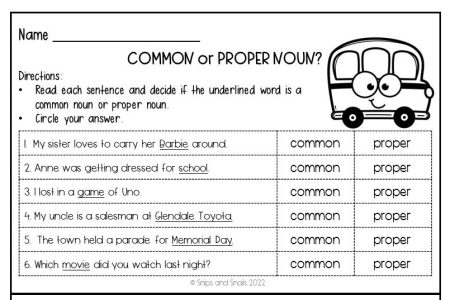
The worksheets above are part of my resource on TpT, but you could even pull sentences from the stories you’re working on in class to practice with your students.
Do you have students struggling with finding nouns? Check out my article on teaching concrete nouns for ideas and activities for reteaching.
Step 4- Practice Changing Nouns
These activities show students the relationship of common and proper nouns when referring to people, places, and things. This knowledge is important for their growth as writers as using a balance of common and proper nouns in writing makes text easier and more enjoyable to read and offers clarity to the reader.
Using Tables
Tables provide simple, straightforward practice with changing nouns. Students can change common nouns to proper or proper to common.
I use a combination of worksheets in my classroom to help my kids master this skill. If you don’t have worksheets handy, though, you can present students with a list of words to change on paper or whiteboards. The one below is included in the freebie!
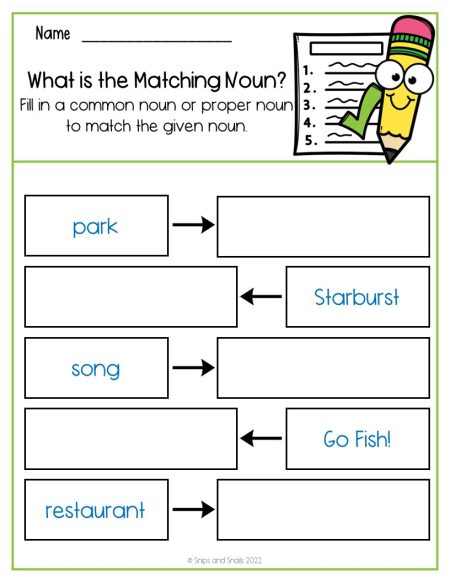
Changing Nouns in Sentences
When students change nouns in sentences, they are not only reinforcing their understanding of the relationship between common and proper nouns…they’re doing even more!
The students are also beginning to learn the importance of carefully choosing which type of noun to use in their own writing since the practice sentences become more, or less, clear as the nouns change form.
Recognizing the presence or lack of clarity in their own writing is a skill students will use throughout their future.
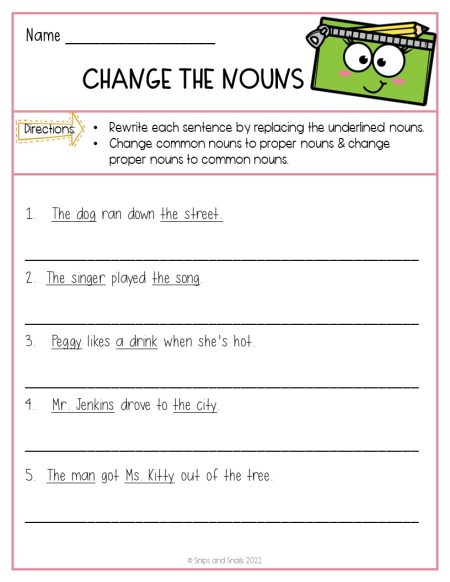
Wrapping it Up
You’ve reached the end of the lesson cycle. Congratulations!
The steps outlined above are strategically designed to help students master common and proper nouns more quickly and easily. Following the steps in order also allows you to catch any struggling students before they fall behind the group. Stop and reteach, when needed, but you should find this approach helpful in keeping your kids on track to mastery.
Remember:
- Define
- Provide Examples
- Identify Nouns
- Change Nouns
Try these activities in your own lessons and let me know how it works for you.
Grab Your Common and Proper Nouns Freebie!
Don’t forget to grab some free resources you can use with your own lessons here!
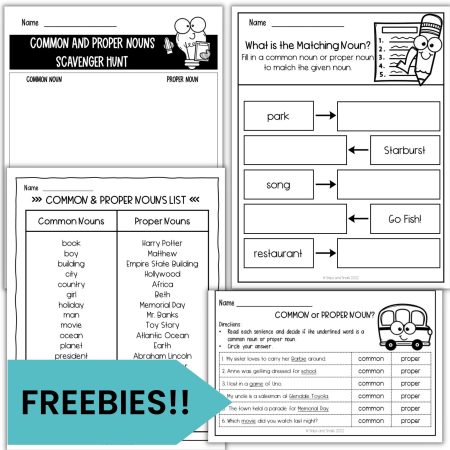
Save Yourself Time - Get All The Activities for Your Lessons Here!
If you’re looking for additional practice pages and want and all-in-one resource to implement the lesson cycle outlined above, check out my Common and Proper Nouns Worksheets resource by clicking the image below. It has everything you’ll need.

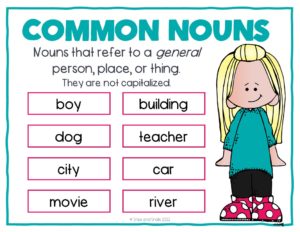
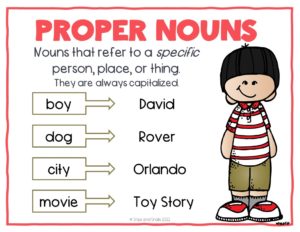
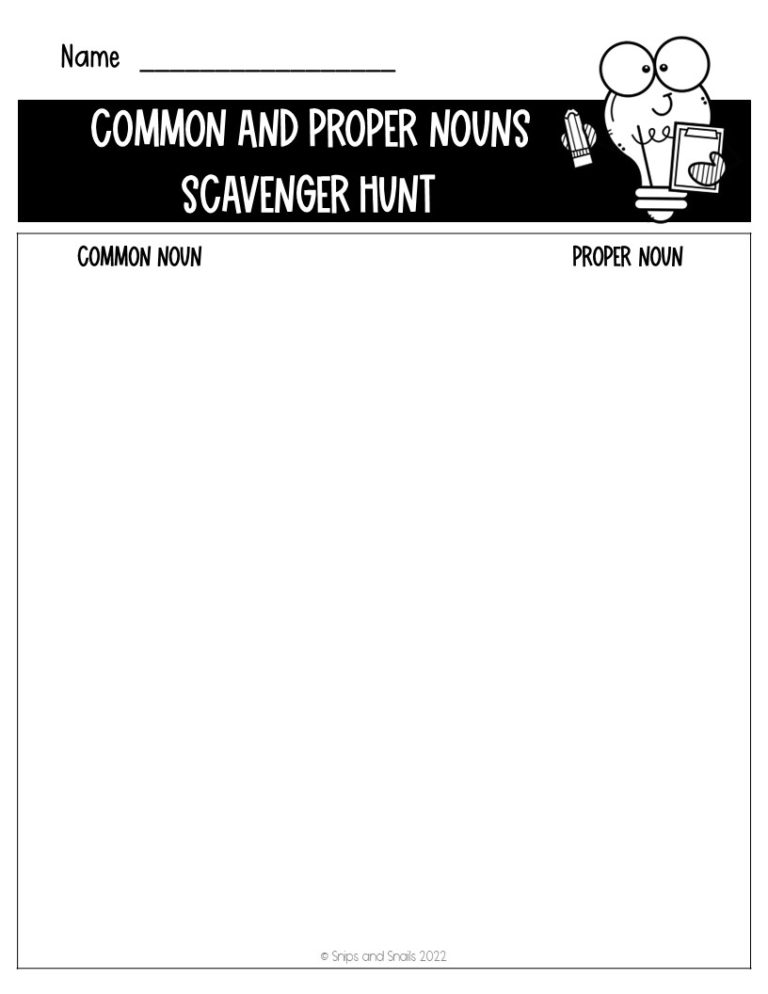

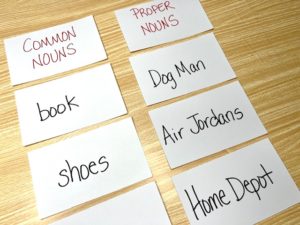
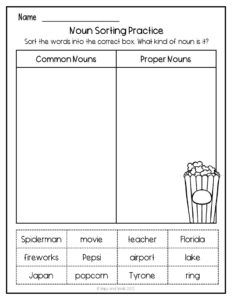
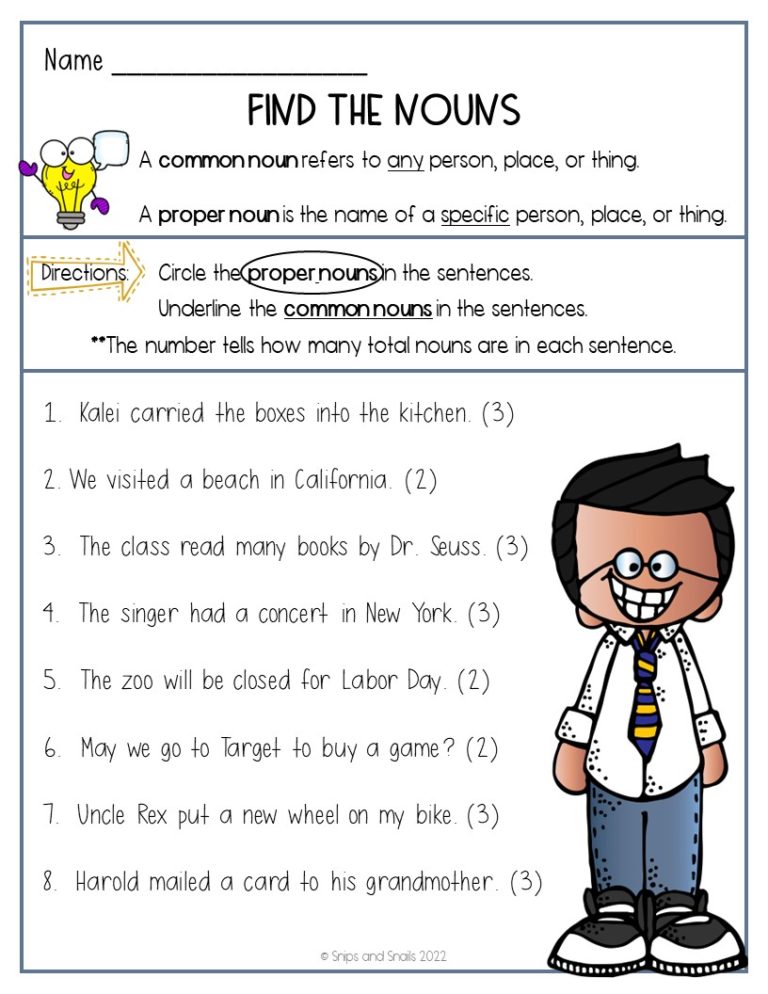
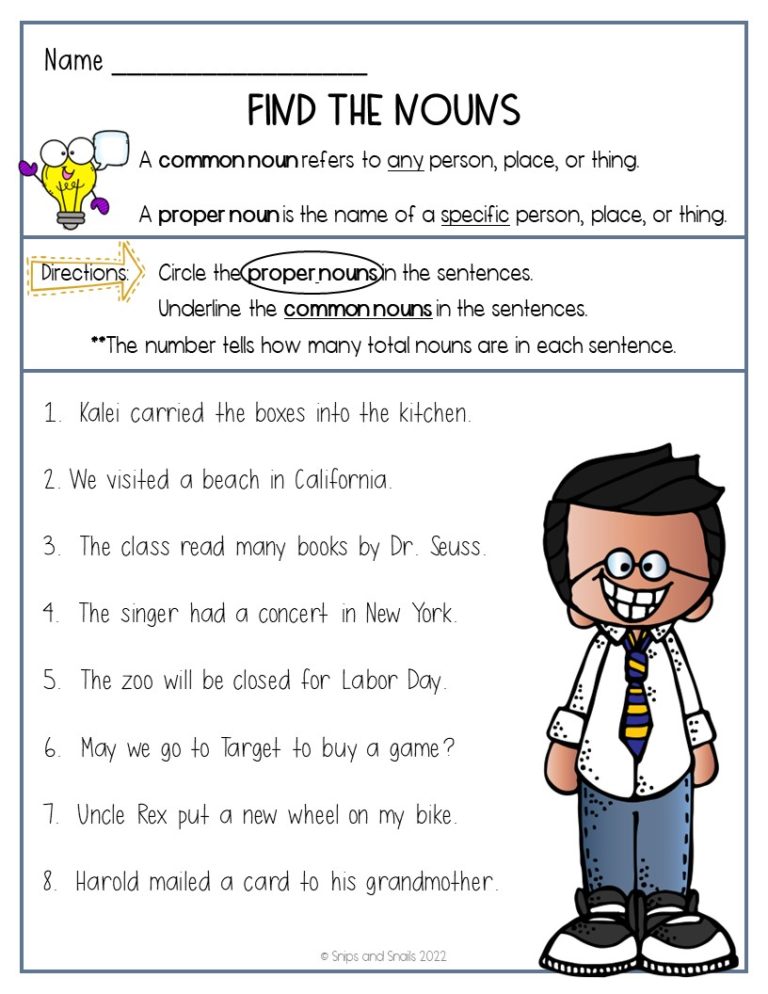
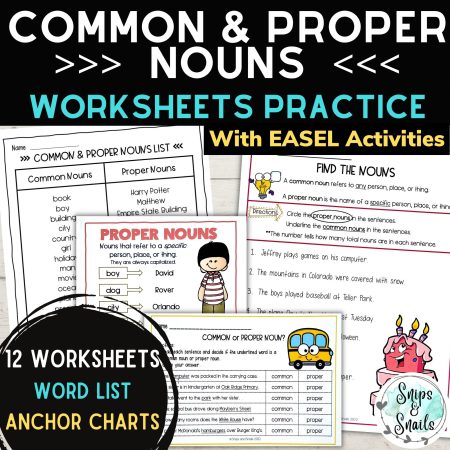

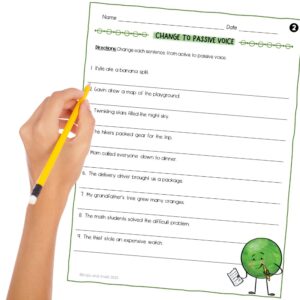
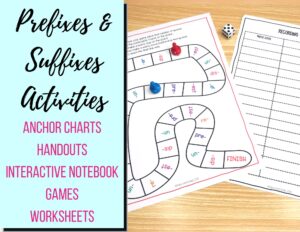
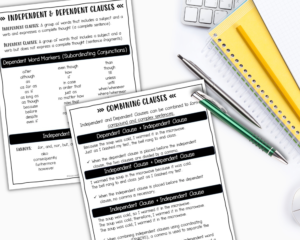
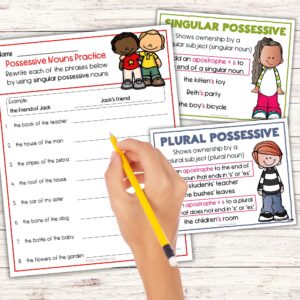
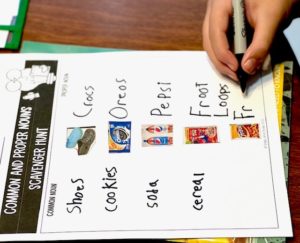

2 Responses